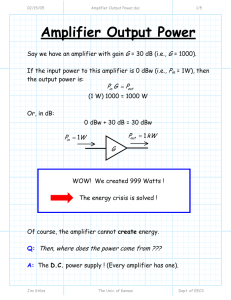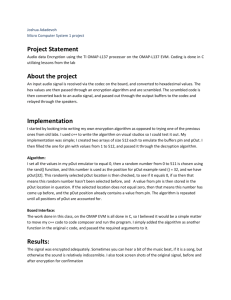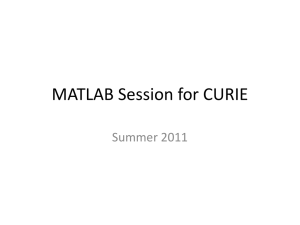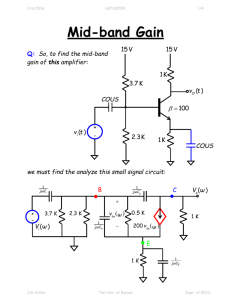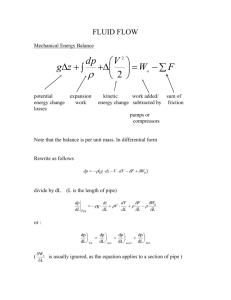Amplifier Output Power
advertisement
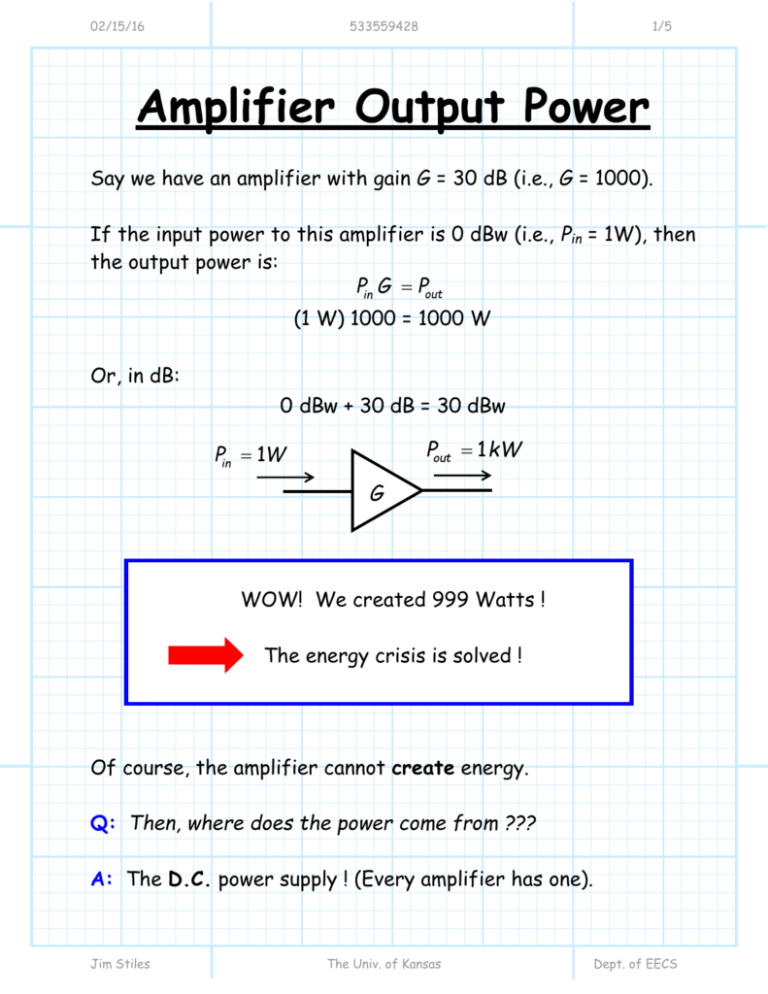
02/15/16 533559428 1/5 Amplifier Output Power Say we have an amplifier with gain G = 30 dB (i.e., G = 1000). If the input power to this amplifier is 0 dBw (i.e., Pin = 1W), then the output power is: Pin G Pout (1 W) 1000 = 1000 W Or, in dB: 0 dBw + 30 dB = 30 dBw Pout 1 kW Pin 1W G WOW! We created 999 Watts ! The energy crisis is solved ! Of course, the amplifier cannot create energy. Q: Then, where does the power come from ??? A: The D.C. power supply ! (Every amplifier has one). Jim Stiles The Univ. of Kansas Dept. of EECS 02/15/16 533559428 2/5 +V I Pin G Pout D. C. Power =PDC =V I > Pout The output power Pout cannot exceed the power delivered by the D.C. supply. Q: What happens to the D.C. power not converted to signal power Pout ?? A: So, if we were to plot Pout vs. Pin for a microwave amplifier, we would get something like this: Jim Stiles The Univ. of Kansas Dept. of EECS 02/15/16 533559428 Pout 3/5 Pout = G Pin PDC G Pin We notice that the output power compresses, or saturates. Note there is one point on this curve where the amplifier output power Pout is 1 dB less than its ideal value of G Pin. In other words, there is one (and only one!) value of Pin and Pout that will satisfy the equation: Pout (dB ) Pin (dB ) G (dB ) 1 dB At this point, the amplifier is said to be compressed 1 dB. Therefore, a 10 dB amplifier would appear to be a 9 dB amplifier! The output power when the amplifier has compressed 1dB is called the 1 dB compression point B P1dB of the amplifier. Jim Stiles The Univ. of Kansas Dept. of EECS 02/15/16 533559428 4/5 The 1 dB compression point is generally considered to be the maximum power output of the amplifier. The input power at the 1 dB compression point is said to be the maximum input power ( Pinmax ) of the amplifier. We of course can put more than Pinmax into the amplifier—but we won’t get much more power out! Pout Pout = G Pin PDC 1 dB P1dB G Pinmax Pin Note the equation Pout (dB ) Pin (dB ) G (dB ) 1 dB alone is not sufficient to determine the 1 dB compression point, as we have two uknowns (Pin and Pout). We need another equation! This second “equation” is the actual curve or table of data relating Pin to Pout for a specific amplifier. Jim Stiles The Univ. of Kansas Dept. of EECS 02/15/16 533559428 5/5 Amplifier Efficiency We can define amplifier efficiency e as the ratio of the maximum output power ( P1dB) to the D.C. power: e P1dB PDC (don’t use decibels here!) For example, if e=0.4, then up to 40% of the D.C. power can be converted to output power, while the remaining 60% is converted to heat. We require high power amps to be very efficient! Jim Stiles The Univ. of Kansas Dept. of EECS
